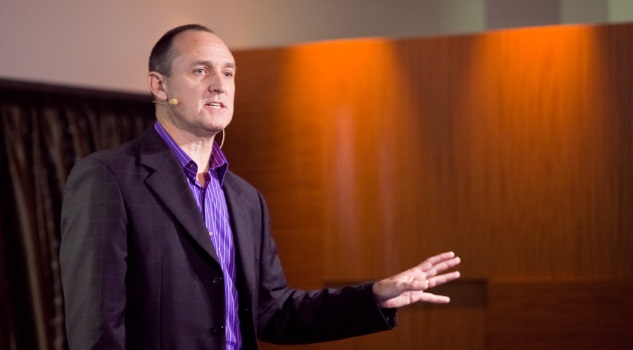Making the most of digital sales and marketing when you’re not a digital business
We live in a digital world and ignoring the digital space, especially for sales and marketing, is like hiding your head in the sand. But how can you – as a small business – leverage, exploit and benefit from digital sales and marketing especially when it so rapidly changing, and you are not a digital or social media specialist?
Recently a good mate and I travelled through the Northern Territory as part of an initiative called Ingenious Oz Project (supported by NT Department of Business, Trade and Innovation) to interview ingenious and innovative businesses and people. Although we didn’t specifically set out to learn about digital exploitation, it soon became apparent that anyone can and should leverage digital technologies.
So let’s look at two small businesses in remote Australia and what they do. One is an tourist operation called Katherine Outback Experience and the other is a social enterprise called Tjanpi Desert Weavers.
Let’s look at a quick overview of the two and how they use and then benefit from digital space, and then tackle three challenges many small businesses have when implementing a digital sales and marketing strategy.
Katherine Outback Experience
Tom Curtain and his wife Annabel McLarty run Outback Experience in Katherine, Northern Territory. Tom is a two-time Golden Guitar winner at the Tamworth Music Festival. Their show is unique because it doesn’t just capture the outback but, as Tom’s also a horse and dog trainer, guests get to see real horse training and working dogs, and during it all he tells stories and sings. It’s the real deal.
Tom and Annabel use digital to create awareness, maintain contact with people and convert sales of bookings and merchandise. They consider their followers just as important as their guests. Digital platforms also help free their time through such things as online shopping and connecting with suppliers. So it’s not just about bringing business in, it’s also about making business easier.
“The lesson is to start small and then grow your digital strategy as required. Most importantly though, just start.”
Tjanpi Desert Weavers
Tjanpi Desert Weavers represent over 400 Indigenous artists from 26 remote communities throughout remote Central and Western desert regions of Australia. They see digital as part of a greater sales and marketing strategy. To generate sales (selling artworks to people all over Australia and the world), but also tell the Tjanpi story. Being such a remote organisation, they rely heavily on digital technology to connect with their market, but also to connect with their artists, who are widely dispersed.
Being a small organisation, they need the ability to flex and change quickly to meet market needs. Digital helps them do this because it’s not a set-and-forget thing but something which is ever changing and so highly responsive.
Tjanpi has “a very engaged group of digital followers” that can give them important feedback on what they do well and what can be improved. The caveat, of course, is that you actually listen to what your followers are saying and then take action. That’s part of Tjanpi’s strategy. “We are constantly improving and adapting to our audience needs,” they told me.
So what platforms should you use?
What’s interesting is neither Tjanpi Desert Weavers or Katherine Outback Experience rely on one solitary platform or digital marketing software; they use several of them. They aren’t locking in to just one and they aren’t using too many. It’s a type of “Goldilocks” effect – not too many, not too few, but just the right combination. And that combination depends on who their market is and what they want to achieve.
Katherine Outback Experience uses different social media platforms for different markets. They use Facebook for an older audience, Instagram for the younger group and LinkedIn for the corporate market. Being a musician and entertainer, YouTube is also a major weapon of choice for Tom’s music videos and footage of the show itself. To keep in touch with their database they use MailChimp.
Tjanpi Weavers uses Facebook and Instagram for several reasons: to tell their story, connect with their audience and generate sales. They also have an online gallery which over the past twelve months has seen a consistent growth in sales.
Do it yourself or outsource?
A difficult question for many small business owners is should you do-it-yourself or outsource an expert to do it for you? It’s a tough one to answer because on the one hand time is precious, especially when you own and run a small business, but on the other there is a considerable cost factor in outsourcing. Again, the answer possibly lies in a combination.
Katherine Outback Experience does most of their digital marketing and sales by themselves. It takes time and discipline but posting to social media channels is now part of the day-to-day running of their business. However, they don’t get too caught up in exact schedules or rigid regimes – after all, there’s a business to run. As Annabel pointed out, “We are a small business operated by two people. We do the best we can by posting every few days on our Instagram account and one to two times a week on our Facebook accounts.”
Having said that, they made the decision to outsource the digital marketing and social media for their current “Tom Curtain speaks up” tour. That way, their time is free for important tasks such as tour logistics, sponsorship proposals and the like. They also know that once on the road their time will be limited.
Tjanpi Weavers are similar. They have two in-house sales officers who look after much of the digital and social aspects of the organisation. Yet for larger projects such as updating their website they outsource where they can. An advantage of this is it creates collaboration and allows different perspectives and insights.
When should you start?
For Annabel at Katherine Outback Experience, the digital space is changing too rapidly to wait to get it right.
It’s one of the things I love about the Northern Territory. Because of its remoteness people just get started and give things a crack. Otherwise nothing happens. It’s the perfect philosophy to adopt with digital marketing and sales.
However, getting started and doing it yourself does require not so much a steep learning curve, but a constant one. The digital landscape is forever changing and keeping up to date is required. That’s a commitment. The good news is you can learn as you go.
Annabel is 100 per cent self-taught and constantly follows blogs, videos and participates in seminars to keep up to date. She mentioned “the more we do the more confident we get”. Tjanpi Desert Weavers are much the same and they look at it as constant experimentation.
The digital space can appear to be a scary and costly beast. Like anything, there are many different levels and we haven’t even touched on SEO (search engine optimisation) or online advertising. But for me the lesson is to start small and then grow your digital strategy as required. Most importantly though, just start. Adopt the Territory mindset and just have a crack.
Finally, a big thanks to both Annabel at Katherine Outback Experience and Tjanpi Desert Weavers for their valuable insights.
Nigel Collin, director, business coach and author of The Game of Inches: Why Small Change Wins Big Results














